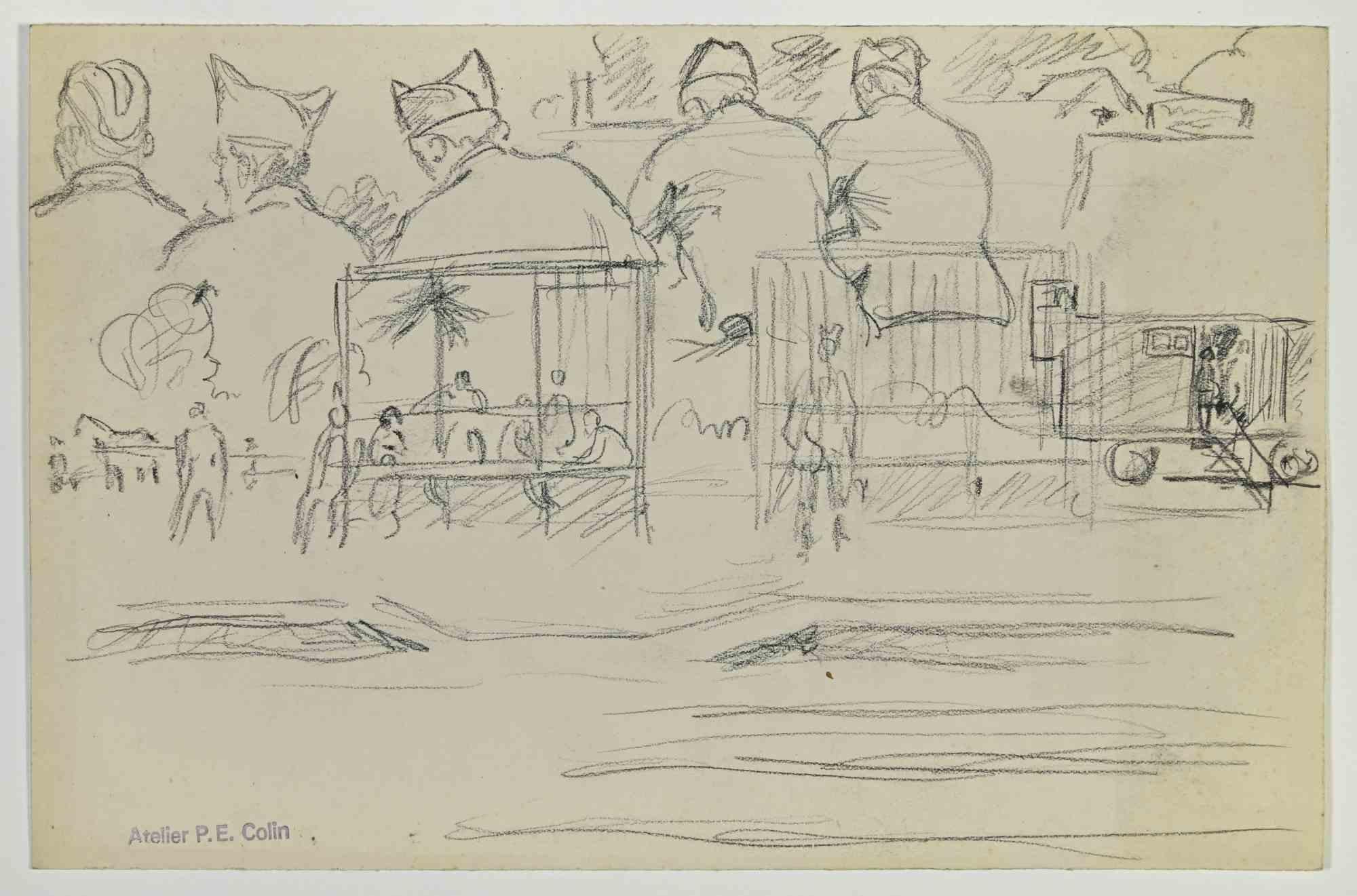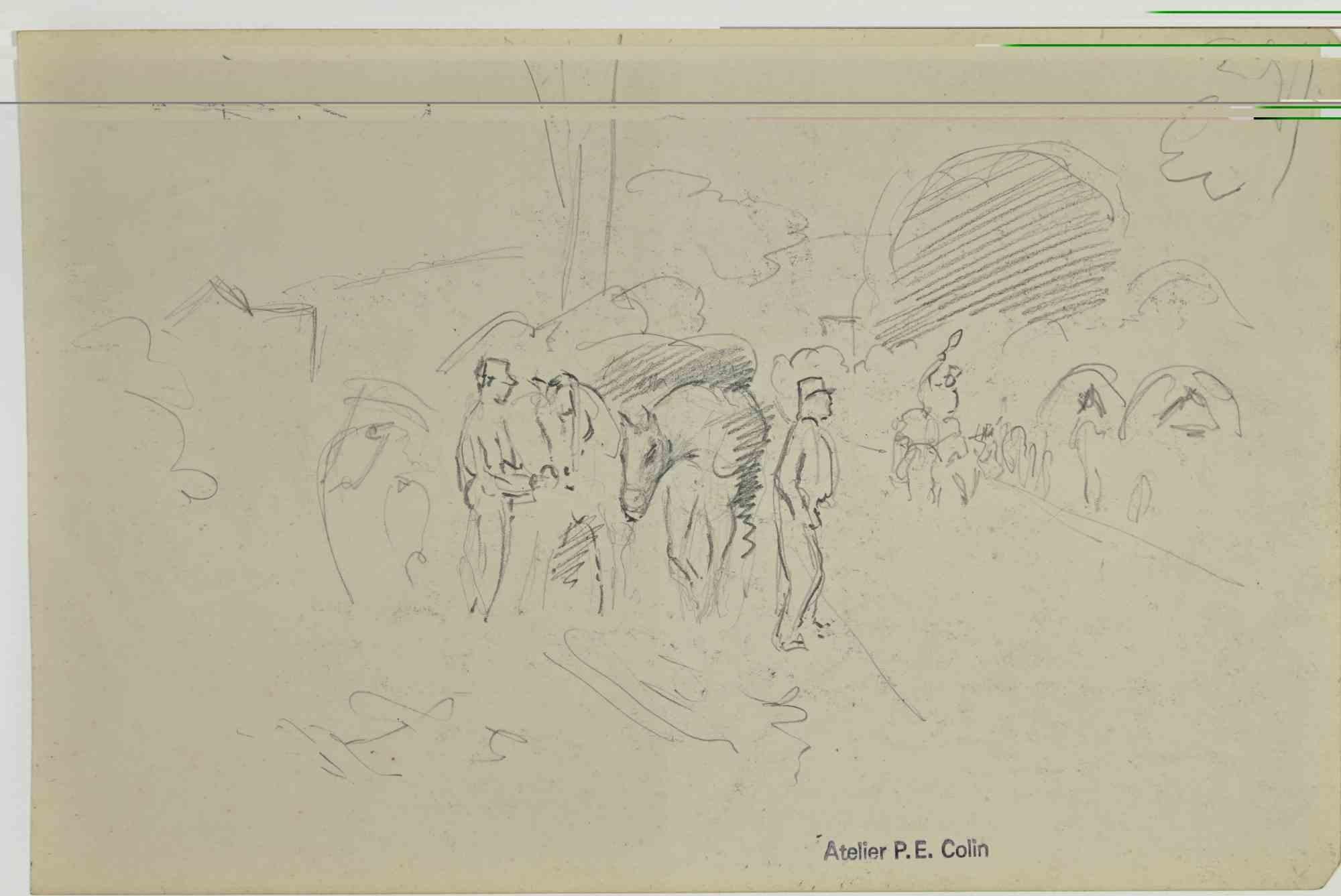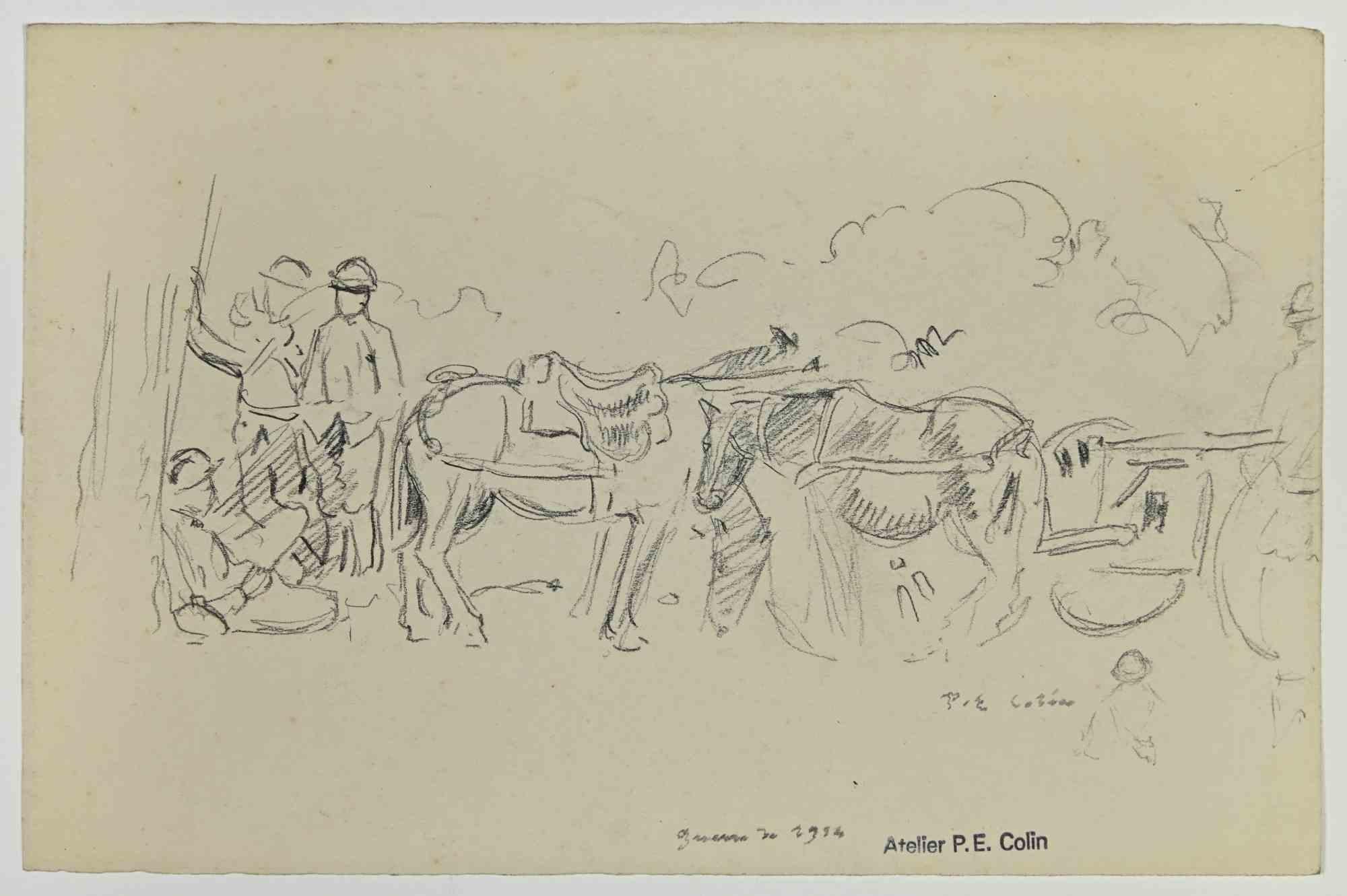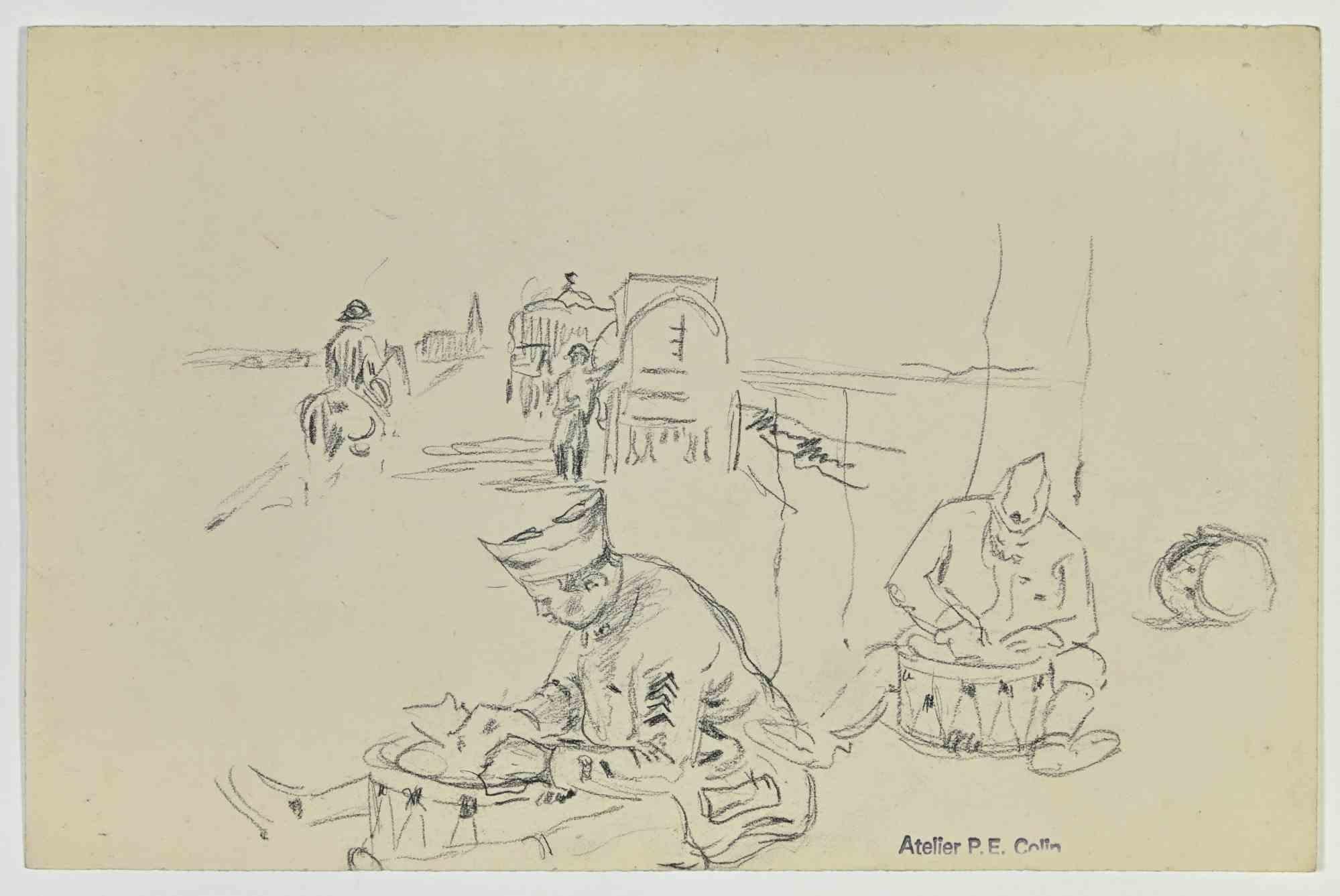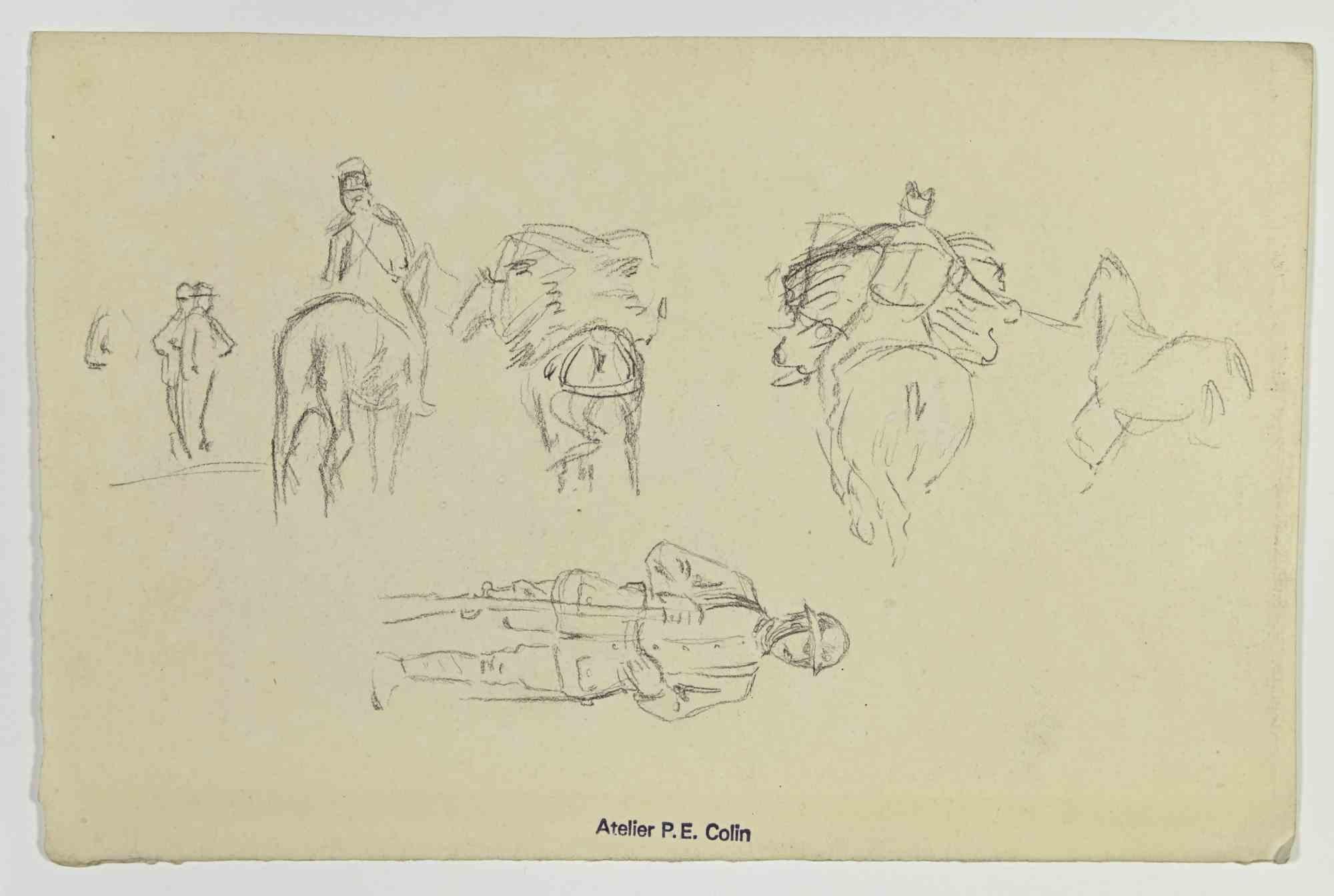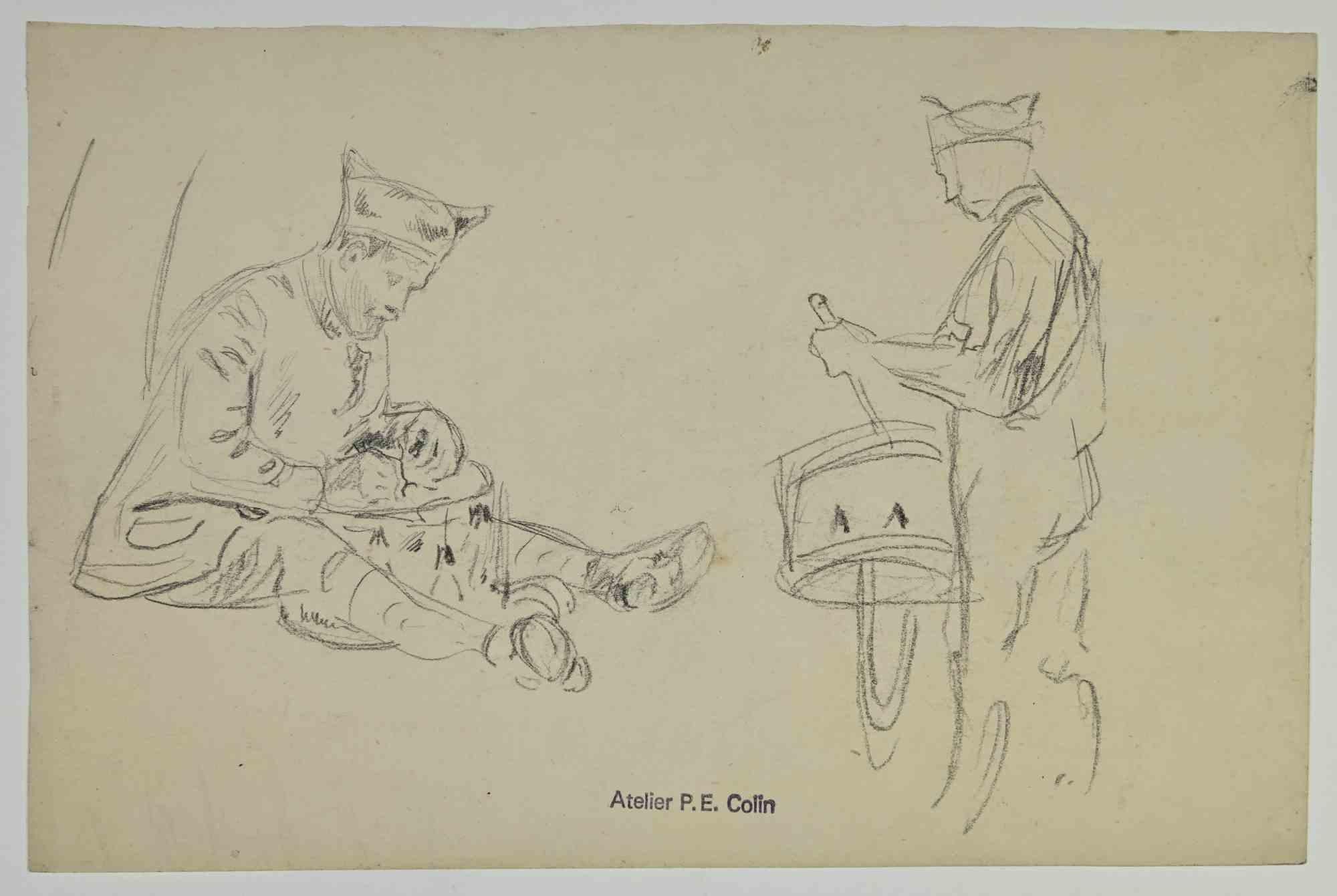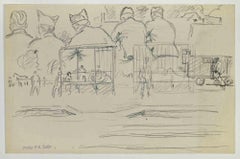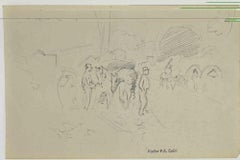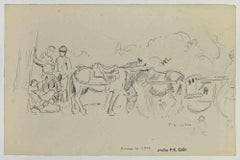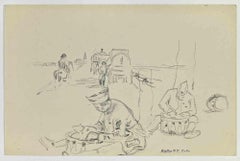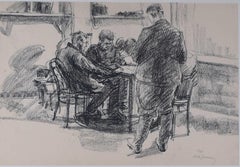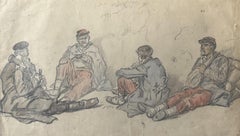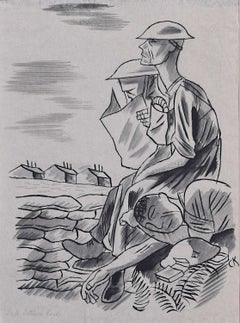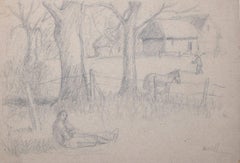Items Similar to Soldiers Resting - Drawing by Paul Emile Colin - Early-20th century
Want more images or videos?
Request additional images or videos from the seller
1 of 2
Paul Emile ColinSoldiers Resting - Drawing by Paul Emile Colin - Early-20th centuryEarly-20th century
Early-20th century
$359.18
£267.23
€300
CA$500.42
A$544.64
CHF 285.93
MX$6,580.09
NOK 3,588.78
SEK 3,383.79
DKK 2,284.26
About the Item
Soldiers Resting is an drawing realized by Paul Emile Colin in the 20th Century.
Carbon Pencil on ivory-colored paper
Stamped on the lower.
Good conditions with slight foxing.
The artwork is realized through deft expressive strokes.
- Creator:Paul Emile Colin (French)
- Creation Year:Early-20th century
- Dimensions:Height: 6.3 in (16 cm)Width: 9.85 in (25 cm)Depth: 0.04 in (1 mm)
- Medium:
- Movement & Style:
- Period:
- Framing:Framing Options Available
- Condition:Insurance may be requested by customers as additional service, contact us for more information.
- Gallery Location:Roma, IT
- Reference Number:Seller: T-1478701stDibs: LU650314223152
About the Seller
4.9
Platinum Seller
Premium sellers with a 4.7+ rating and 24-hour response times
1stDibs seller since 2017
7,724 sales on 1stDibs
Typical response time: 2 hours
- ShippingRetrieving quote...Shipping from: Grasse, France
- Return Policy
Authenticity Guarantee
In the unlikely event there’s an issue with an item’s authenticity, contact us within 1 year for a full refund. DetailsMoney-Back Guarantee
If your item is not as described, is damaged in transit, or does not arrive, contact us within 7 days for a full refund. Details24-Hour Cancellation
You have a 24-hour grace period in which to reconsider your purchase, with no questions asked.Vetted Professional Sellers
Our world-class sellers must adhere to strict standards for service and quality, maintaining the integrity of our listings.Price-Match Guarantee
If you find that a seller listed the same item for a lower price elsewhere, we’ll match it.Trusted Global Delivery
Our best-in-class carrier network provides specialized shipping options worldwide, including custom delivery.More From This Seller
View AllSoldiers Campsite - Drawing by Paul Emile Colin - Early-20th century
Located in Roma, IT
Soldiers Campsite is a drawing realized by Paul Emile Colin in the Early 20th Century.
Carbon Pencil on ivory-colored paper
Stamped on the lower.
Good conditions with slight foxin...
Category
Early 20th Century Modern Landscape Drawings and Watercolors
Materials
Pencil
Soldiers in the Camp - Drawing by Paul Emile Colin - Early-20th century
Located in Roma, IT
Soldiers in the Camp is a drawing realized by Paul Emile Colin in the Early 20th Century.
Carbon Pencil on ivory-colored paper
Stamped on the lower.
Good conditions with slight fo...
Category
Early 20th Century Modern Landscape Drawings and Watercolors
Materials
Pencil
Soldiers - Drawing by Paul Emile Colin - Early-20th century
Located in Roma, IT
Soldiers is a drawing realized by Paul Emile Colin in the Early 20th Century.
Carbon Pencil on ivory-colored paper
Stamped on the lower.
Good conditions with slight foxing.
The a...
Category
Early 20th Century Modern Landscape Drawings and Watercolors
Materials
Pencil
Soldiers Preparation - Drawing by Paul Emile Colin - Early-20th century
Located in Roma, IT
Soldiers Preparation is a drawing realized by Paul Emile Colin in the Early 20th Century.
Carbon Pencil on ivory-colored paper
Stamped on the lower.
Good conditions with slight fo...
Category
Early 20th Century Modern Landscape Drawings and Watercolors
Materials
Pencil
Soldiers - Drawing by Paul Emile Colin - Early-20th century
Located in Roma, IT
Soldiers is a drawing realized by Paul Emile Colin in the Early 20th Century.
Carbon Pencil on ivory-colored paper
Stamped on the lower.
Good conditions with slight foxing.
The a...
Category
Early 20th Century Modern Landscape Drawings and Watercolors
Materials
Pencil
Soldiers - Drawing by Paul Emile Colin - Early-20th century
Located in Roma, IT
Soldiers is a drawing realized by Paul Emile Colin in the Early 20th Century.
Pencil on ivory colored paper
Stamped on the lower.
Good conditions with slight foxing.
The artwork...
Category
Early 20th Century Modern Landscape Drawings and Watercolors
Materials
Pencil
You May Also Like
Soldiers Waiting, charcoal drawing by Hubert Finney
Located in London, GB
Hubert Finney (1905 – 1991)
Soldiers Waiting
Charcoal
37 x 55 cm
A reclusive figure whose work has remained largely unseen, Finney studied under Eric Gill before winning a scholarsh...
Category
1940s Modern Landscape Drawings and Watercolors
Materials
Charcoal, Pastel, Color Pencil
Auguste Gardanne (1840-1890) Soldiers at rest, War of 1870, wartercolor
Located in Paris, FR
Auguste Gardanne (circa 1840- circa 1890)
Soldiers at rest during the franco-prussian war of 1870
Watercolor on paper
On the reverse Study of a battlefield (?)
Pencil on paper
Mark o...
Category
1870s Portrait Drawings and Watercolors
Materials
Watercolor
Lull Between Raids - Second World War drawing by Cecil Keeling
Located in London, GB
Cecil Keeling
Prisoner of War Camp
Pen, ink and wash
22 x 16 cm
Initialled lower right
This poignant work depicts a quiet moment between raids. Three soldiers sit in a row at ease. ...
Category
Mid-20th Century Figurative Drawings and Watercolors
Materials
Ink, Pen
A Moment of Rest, pencil sketch by George Bissill
Located in London, GB
George Bissill (1896-1973)
A moment of rest
Pencil sketch
28 x 38 cm
Signed to lower right
Born in 1896, George Bissill was a British miner, painter and furniture designer. Rais...
Category
Mid-20th Century Modern Figurative Drawings and Watercolors
Materials
Pencil
Taking Cover in the Trenches - Second World War drawing by Cecil Keeling
Located in London, GB
Cecil Keeling
Taking cover in the trenches
Pen, ink and wash
20 x 26 cm
Initialled lower right
This poignant work depicts three soldiers sheltering from a raid in the trenches. As...
Category
Mid-20th Century Figurative Drawings and Watercolors
Materials
Ink, Pen
Louis Tinayre (1861-1942) An encampment of journalists, signed drawing
Located in Paris, FR
Louis Tinayre (1861-1942)
An encampment of journalists in Chambéry,
signed and titled lower left "Campement de journalistes à Chambéry"
Ink on paper
In quite good condition, a a visible vertical fold in the centre, some stains and foxings
21 x 29 cm
Framed : 33.7 x 45.5 cm
Louis Tinayre's background and adventurous life obviously inform this humorous and detailed scene. He demonstrates a remarkable sense of observation, capturing this scene of extraordinary life like a journalistic illustrator.
A contributor, to whom I'd like to express my sincere thanks, sheds important light on the nature of this scene.
It appears that this drawing is the draft for an illustration published in “Le Monde illustré” of August 4, 1888 (page 77), to accompany the article “Épilogue du voyage présidentiel” (Epilogue to the presidential trip) - president Sadi Carnot- en Savoie et en Dauphiné (p. 74), which ends with: “As a picturesque note, we enclose an improvised journalists' dormitory in Chambéry, where our colleagues deeply regretted the comfort of the special train”.
As a quasi-ethnographic observer, Tinayre's interest lies in the journalists' camp, which he turns into a tender, comical scene. We understand him better when we know that he may have been similarly fascinated by the territories of Madagascar, the North Pole or the Far West that he painted and drew.
Louis Tinayre was born on 14 March 1861 in Neuilly-sur-Seine. His mother, Victoire Tinayre, was a teacher and a member of the International Workers' Association.
Louis was the son of a Communard couple. His father, Jean Joseph, known as Jules Tinayre (Issoire 1821 - Paris 1871) was shot during the Bloody Week. His mother, Victoire Tinayre, fled with her children. Louis was the first to be sent to Hungary, and the rest of the family (including his brother Julien) joined him there later. He studied Fine Arts at the Hungarian University of Fine Arts in Budapest.
Returning to Paris in 1880 (after the amnesty), Louis Tinayre assiduously frequented Le Chat noir, where he met the positivists and Adèle Jacomet (Buenos Aires 1867-1946), whom he married in 1888.
He became an animal painter and press illustrator and was sent by Le Monde Illustré to cover the second expedition to Madagascar (then under French protectorate) in 1895.
He stayed there, fascinated, for six months and produced numerous drawings and photographs. Back in France, he created eight 5 x 4 meters dioramas presented at the National and Colonial Exhibition in Rouen in 1896.
He returned to Madagascar in 1898 to prepare the creation of a giant panorama representing the surrender of Antananarivo in 1895. The Malagasy pavilion at the 1900 Universal Exhibition in Paris allowed him to admire the dioramas (on the ground floor) and the panorama (on the first floor).
On his second trip, Tinayre took a Lumière cinematograph with him to document the daily life of the Malagasy people, no doubt to facilitate the design of the vast panorama. These short films were donated to the Cinémathèque française in 2009 by his grandson, Alain Tinayre.
One of the admirers of Tinayre's drawings, watercolours, paintings and photographs at the Universal Exhibition was Prince Albert I of Monaco: from 1901 onwards, Tinayre accompanied him on his hunts, painting scenes in North Africa, Russia, the Far West (Wyoming) and the North Pole. Tinayre, the official painter of the Prince's scientific expeditions, left his name to a glacier.
Together with the painter Alexandre Jean-Baptiste Brun, he painted the four murals in the large amphitheatre of the Oceanographic Institute in Paris. Louis Tinayre painted the figures while Alexandre Brun...
Category
1890s Realist Interior Drawings and Watercolors
Materials
Ink
